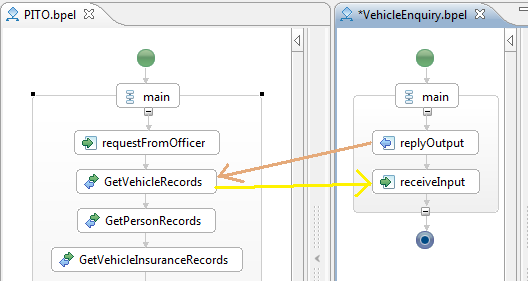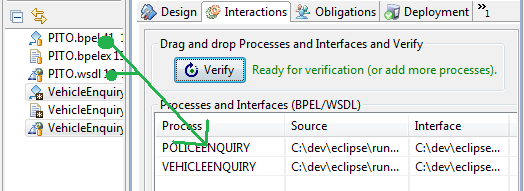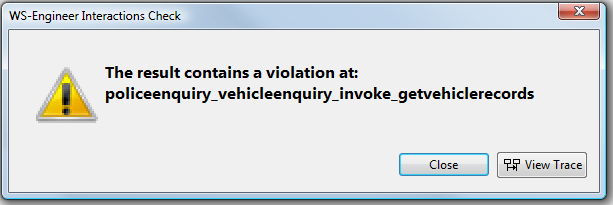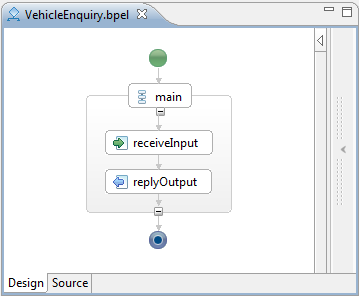In this tutorial the user will be able to analyse interacting WS-BPEL processes for completeness and correctness of behaviour specified.
Note: Ensure you have carried out the pre-requisites as described in the Preparation section.
The verification performs a service "port connector" based mapping. The verification ensures that the interacting partners of the service composition fulfill required interaction behaviour, in the correct sequence and over the correct channels.In a simple example, the two WS-BPEL processes below are executed out of sequence, as the VehicleEnquiry partner firstly executes a reply and then a receive (receive should be before the reply).

In this tutorial we will analyse these processes, observe the violation and then correct the partner process to observe correctness.
Steps
| 1. | Select the |
Drag and drop selected WS-BPEL and WSDL files (together) in the Processes and Interfaces list box of the interactions view. Repeat this for as many interacting processes as you wish to analyse.
Note: Each WS-BPEL process is paired with one or more WSDL files. In this sample, we associate one WS-BPEL with one WSDL file.

When two or more processes and WSDL files have been added, the ![]() button will be enabled. Click the button to start the interaction verification.
button will be enabled. Click the button to start the interaction verification.
Note: If the button is not enabled after adding both valid process and WSDL files, then it is possible that the either of the file types is not valid. Check each file for the correct syntax and form.
In the first case (of the out of sequence partner described previously) the following violation is observed.

You can click the ![]() button to show the trace to violation as an MSC.
button to show the trace to violation as an MSC.
Now, change the VehicleEnquiry process to reflect the receive BEFORE the reply (as shown below).

Repeating the verification step shows that No Violations found.

END OF TUTORIAL